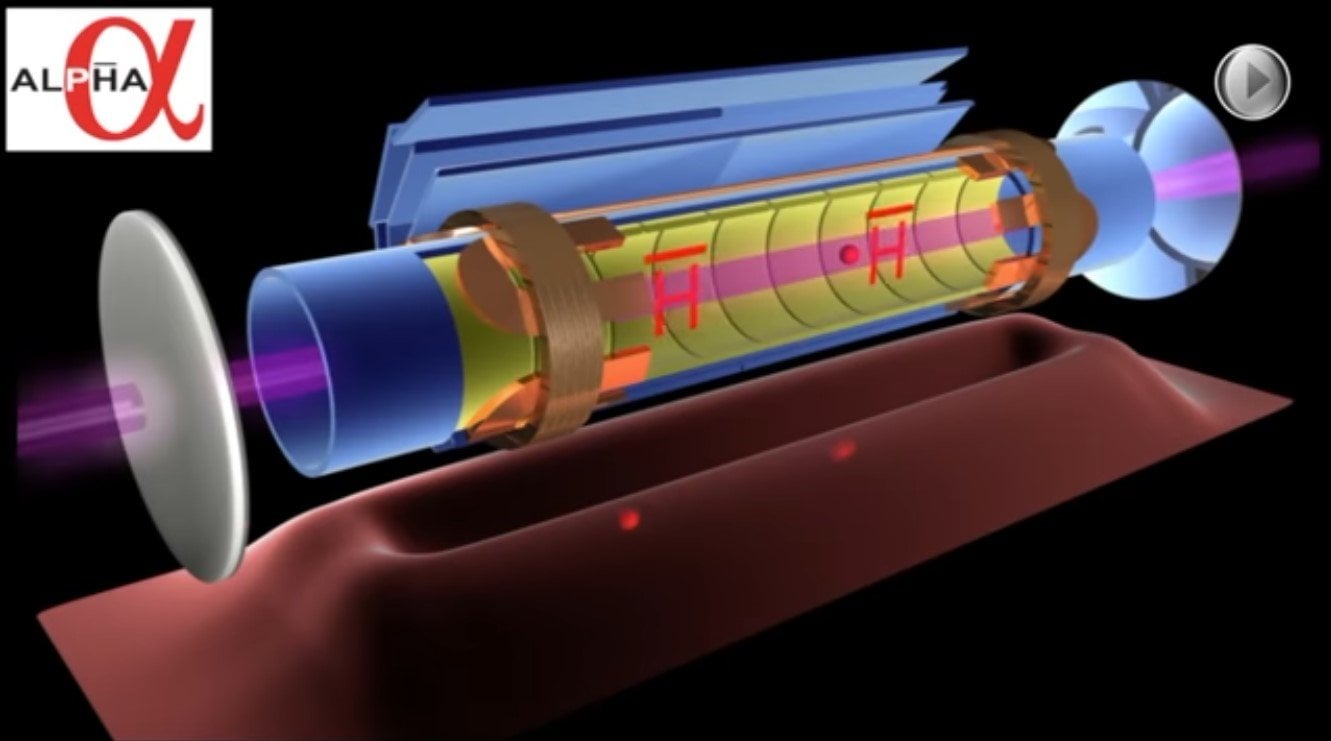According to the Big Bang theory, the Universe came to life around 13.7 billion years ago. Following that event, it is assumed that all the matter and antimatter particles formed in huge pairs and continued creating all possible forms of matter that we know of today. While scientists can see and measure matter, it’s completely the opposite for antimatter. However, in a recent study, scientists attempted to provide the most accurate measures of antimatter.
According to Phys.org, on Wednesday, Europe based scientists used a huge underground particle lab to get the most accurate measures of antimatter, using unprecedented observations of an antimatter particle, atom of “antihydrogen.”
“What we’re looking for is (to see) if hydrogen in matter and antihydrogen in antimatter behave in the same way,” Jeffrey Hangst of the ALPHA experiment at the European Organisation for Nuclear Research (CERN) said in a video.
If scientists found even the smallest difference between the way they perceive antimatter, it would definitely change many physics models of how things form. Those include the fundamental particles that the Universe consists of and all forces that interact in the Universe. However, the most accurate measures of antimatter show no difference compared to the previous ones. Hangst said in CERN’s video that there is no difference between the new and previous models.
According to the physicists, matter and antimatter met and imploded following the Big Bang, meaning that the Universe should only have leftover energy. However, according to the scientists, there is 4.9% of matter, everything that we can touch and feel, in the Universe.
On the other hand, dark matter is much more mysterious and can be only observed through its gravitational pull on other objects and it makes up 26.8% of the Universe, while the dark energy makes the remaining 68.3%.
According to the most accurate measures of antimatter, some theoretical physicists think that there is the “missing” antimatter that could be discovered in the hidden and unknown parts of the Universe, in places believed to be called anti-galaxies that contain anti-stars and anti-planets.
Scientists are working to reveal the mystery behind the atom of matter hydrogen. They studied it because it’s the simplest of all known elements, as it only has an electron that orbits a single proton. The scientists made hydrogen mirror particles, by using antiprotons that remained in the CERN’s high-energy particle collisions and has bound them with positrons that are the anti-matter counterparts of electrons.
The result, actually antihydrogen atoms, were trapped in a magnetic trap so that it wouldn’t come in contact with matter. Following this isolation, the team studied how atoms react to laser light. Atoms that consist of different kinds of matter can absorb light on different frequencies, and under the currently most prevailing theory, hydrogen and antihydrogen are capable of absorbing the same type of laser lights, which is, so far, what they do. Nevertheless, scientists said that they are hoping for some differences to come out of these experiments.
“Although the precision still falls short for that of ordinary hydrogen, the rapid progress made by ALPHA suggests hydrogen-like precision in antihydrogen (measurements)… are now within reach,” said Hangst.
The findings were published in the journal Nature.





